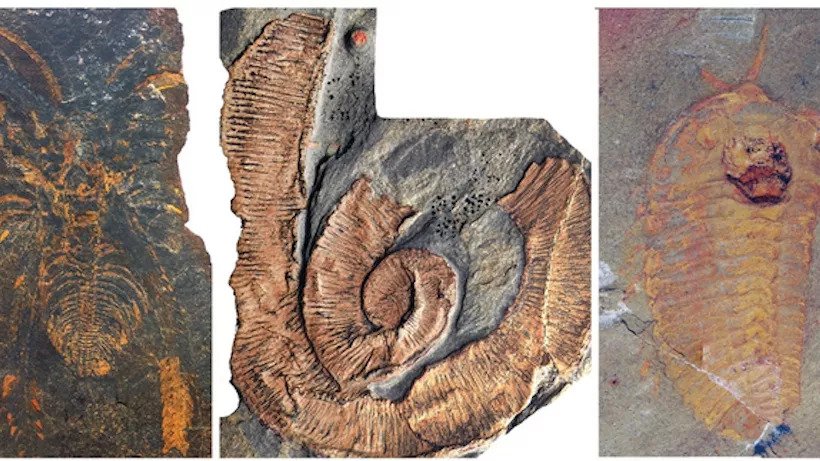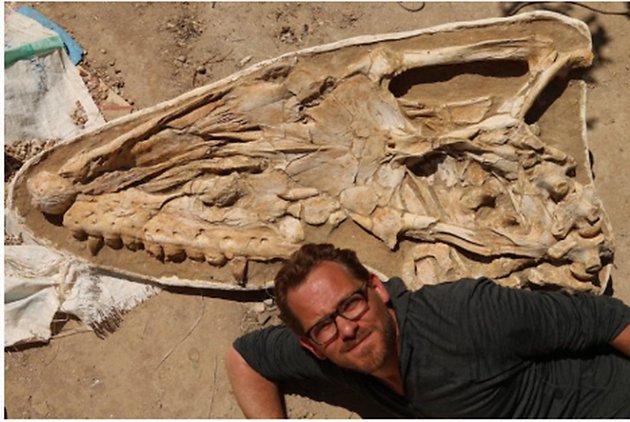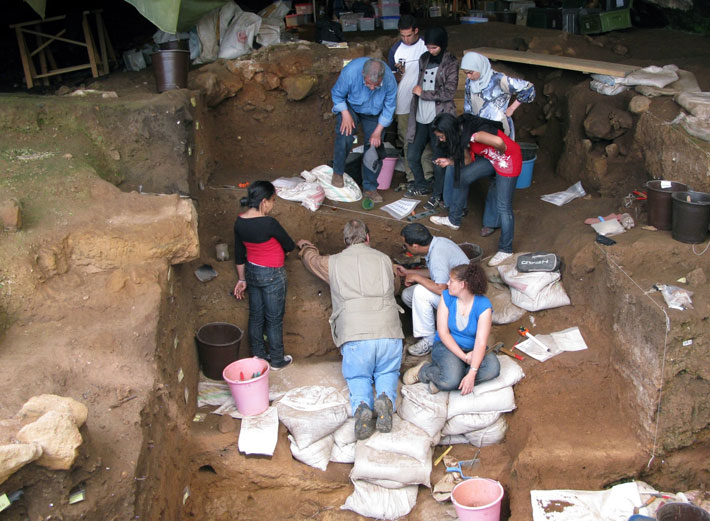7-foot-long arthropods commanded the sea 470 million years ago, ‘exquisite’ fossils show

Exquisitely preserved fossils in Morocco suggest that some of the earliest arthropods were nearly 7 feet (2 meters) long — gigantic in comparison with the shrimps, insects, and spiders that are descendants of these early invertebrates, according to a new study.
Researchers made the discovery while exploring the site, known as Taichoute, which is part of the Fezouata Shale, a swath of fossil deposits dating to the Lower Ordovician period (485 million to 470 million years ago) that was discovered in 2017.
Now part of the Moroccan desert, Taichoute was completely undersea millions of years ago.
Prior to the exploration of Taichoute, the closest Moroccan fossil sites were near Zagora, a town 50 miles (80 kilometers) away, where giant arthropods make up roughly 1% to 2% of the total fossil material.
At Taichoute, nearly half of the fossils are of these jumbo creatures, according to the study.
“All of our previous knowledge on the Fezouata Shale was solely based on fossil sites near the Zagora region,” Farid Saleh, the study’s lead author and a postdoctoral fellow at the University of Lausanne in Switzerland, told Live Science in an email.
“The dominance of large arthropods in Taichoute is unique. You can possibly find [many specimens] in one day.”
“These arthropods were active swimmers and dominated this area 470 million years ago,” Saleh said. “Some of these arthropods were described before, but there’s a good number of new species.”
While researchers are currently identifying the roughly 70 specimens collected from the fossil beds during the dig, they unearthed multiple examples of Aegirocassis, an extinct genus of filter-feeding arthropods. They were also “free-swimmers and could move any way they wanted to in the water,” Saleh said.
Being entombed in the mud-caked fossil beds for millions of years has led to the “exquisite preservation of [the] fossils,” Saleh said. In some cases, even soft parts of the animals, including their internal organs, were preserved.
While the upper portions of their external shells were well preserved overall, “they’ve been fragmented to some extent, because they were transported by underwater landslides prior to their preservation.”
Researchers think they have barely scratched the surface of what could be lurking in the Fezouata Shale.
“There’s a lot to do in Taichoute,” Saleh said, “and more fieldwork will bring a lot more in the future.”
The findings were published Dec. 13 in the journal Scientific Reports.








